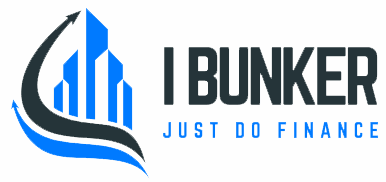Blockchain technology has been making waves across various industries, promising transparency, security, and efficiency like never before. But how exactly does it work? Let’s dive into the fascinating world of blockchain and unravel its inner workings.
1. Introduction to Blockchain
1.1 What is Blockchain?
Blockchain is a decentralized digital ledger that records transactions across a network of computers. Each transaction is stored in a block, which is linked to the previous one, forming a chain of blocks – hence the name “blockchain”.
1.2 History of Blockchain
Blockchain technology was conceptualized by an anonymous person or group known as Satoshi Nakamoto in 2008. It was originally devised for the digital currency Bitcoin but has since found applications in various fields beyond finance.
2. How Does Blockchain Work?
2.1 Decentralization
One of the key features how blockchain technology works is decentralization. Instead of relying on a central authority, like a bank or government, transactions are validated by a network of computers (nodes) spread across the globe.
2.2 Cryptography
Blockchain uses cryptographic techniques to secure transactions and control the creation of new units. Each transaction is digitally signed to ensure its authenticity and integrity.
2.3 Consensus Mechanisms
Consensus mechanisms, such as Proof of Work (PoW) and Proof of Stake (PoS), are used to achieve agreement among nodes on the validity of transactions. These mechanisms ensure that all transactions on the blockchain are legitimate.
3. Components of a Blockchain
3.1 Blocks
Blocks contain batches of transactions that are hashed and encoded into a Merkle tree. Each block also contains a reference to the previous block, creating a chronological chain of blocks.
3.2 Transactions
Transactions are the records of exchanges of digital assets or information. These transactions are grouped together into blocks and then added to the blockchain.
3.3 Nodes
Nodes are individual computers that participate in maintaining the blockchain network. They store a copy of the entire blockchain and validate transactions.
4. The Process of Transaction Verification
4.1 Creating a Transaction
When a user initiates a transaction, it is broadcasted to the network of nodes. The transaction includes details such as the sender, recipient, and the amount of the transaction.
4.2 Verification Process
Nodes on the network verify the transaction by checking its validity and ensuring that the sender has sufficient funds to complete the transaction.
4.3 Adding Transactions to a Block
Once verified, the transaction is added to a block along with other transactions. This block is then added to the blockchain after consensus is reached among the nodes.
5. Security in Blockchain
5.1 Immutability
Once a transaction is recorded on the blockchain, it cannot be altered or deleted. This immutability ensures the integrity and security of the data stored on the blockchain.
5.2 Transparency
Blockchain provides transparency as all transactions are visible to all participants in the network. This transparency helps in reducing fraud and increasing accountability.
5.3 Resistance to Tampering
Blockchain’s decentralized nature and cryptographic techniques make it highly resistant to tampering and hacking attempts. Any attempt to alter a block would require consensus from the majority of nodes, making it practically impossible.
6. Applications of Blockchain Technology
6.1 Cryptocurrencies
Cryptocurrencies, such as Bitcoin and Ethereum, sell bitcoin for cash, are perhaps the most well-known applications of blockchain technology. They enable secure and transparent peer-to-peer transactions without the need for intermediaries.
6.2 Smart Contracts
Smart contracts are self-executing contracts with the terms of the agreement directly written into code. They run on blockchain and automatically enforce and execute the terms of the contract when predefined conditions are met.
6.3 Supply Chain Management
Blockchain technology is revolutionizing supply chain management by providing transparency and traceability throughout the entire supply chain. It enables stakeholders to track the movement of goods from the source to the end consumer.
7. Challenges and Future of Blockchain
7.1 Scalability
Scalability remains a significant challenge for blockchain technology, especially as the number of transactions and users continues to grow. Solutions like sharding and layer 2 protocols are being developed to address this issue.
7.2 Regulatory Concerns
Regulatory uncertainty and compliance issues pose challenges to the widespread adoption of blockchain technology. Clear regulations and guidelines are needed to foster innovation while ensuring consumer protection.
7.3 Integration with Existing Systems
Integrating blockchain technology with existing systems and infrastructure is another hurdle that needs to be overcome. Interoperability standards and protocols are being developed to facilitate seamless integration.
8. Conclusion
Blockchain technology holds immense potential to transform various industries by providing secure, transparent, and efficient solutions. Understanding how blockchain works is essential for harnessing its benefits and driving innovation forward.

